Nothing About Us Without Us
Developing Innovative Technologies
For , By and With Disabled Persons
David Werner
with the PROJIMO team
and many friends
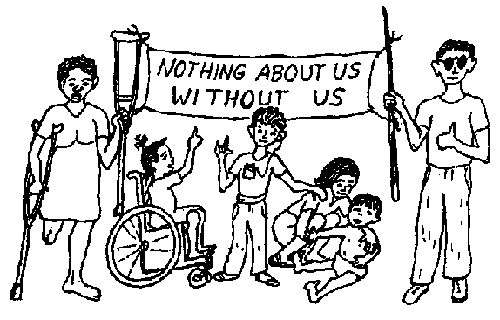
Drawings and photos by the author
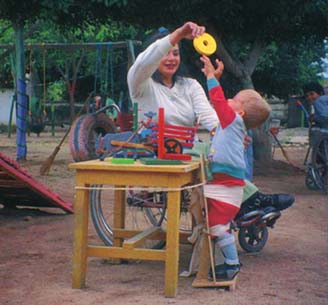
AIDS AND EQUIPMENT IN THE COVER PHOTO
The cover photo shows Raúl, a boy born with club feet, whose story is told in Chapter 14 (page 97). If you look closely at the photo, you will see examples of some of the aids and equipment we explore in this book. These same items are shown in the drawings below, together with the page numbers where you can find them.
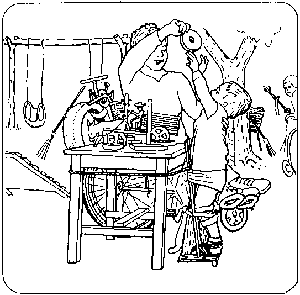
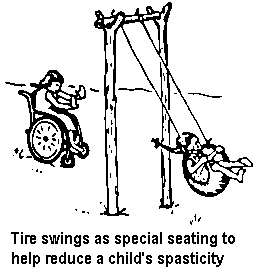 See page 57 |
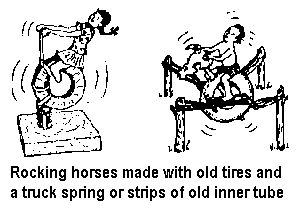 See pages 58, 331 |
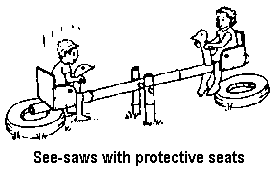 See pages 58, 289, and 318 |
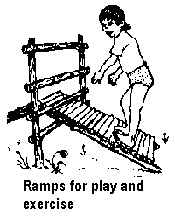 See pages 288, 317 |
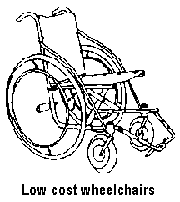 See page 289 and all of Part 4 |
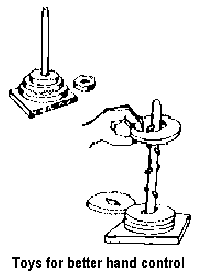 See page 291 |
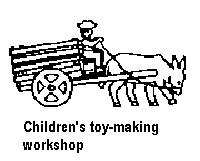 See pages 290-292, and 322-324 |
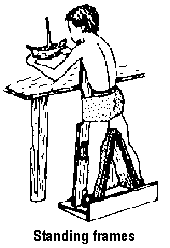 See pages 22, 45, 69, 98 |
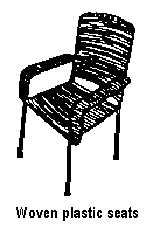 See page 277 |
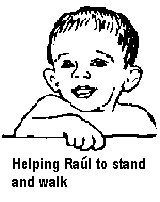 see page 97 |
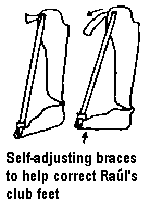 see page 98 |
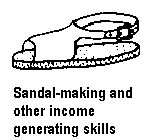 see pages 95 and 276 |
This book is dedicated to those people
everywhere who, because they are different,
are looked down upon or are not given
an equal chance...
and to my friends at PROJIMO
who continue to show us that persons
who are different can make a difference.
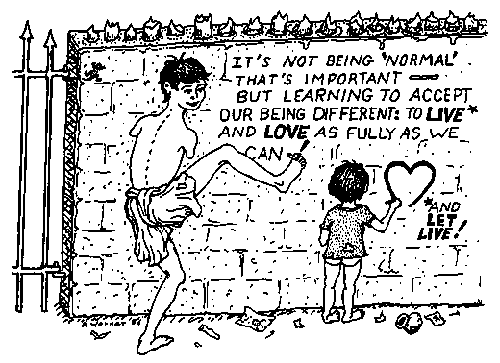
Thanks
Many persons have helped with the creation of this book and the innovative processes it describes. Following are some of the most important contributors.
First, heartfelt thanks go to the rehabilitation team of PROJIMO (Program of Rehabilitation Organized by Disabled Youth of Western Mexico) without whose creativity, hard work, and caring touch the substance for most of this book would not exist. Of the PROJIMO team, those whose contributions are portrayed on these pages include Conchita Lara, Mari Picos, Marcelo Acevedo, Armando Nevárez, Inez León, Cecilia Rodríguez, Rosa Salcido, Julio Peña, Martín Pérez, María de Jesús Leyva, Jaime Torres, Irma Llavió, Mario Carrasco Hernández, Miguel Zamora, and Marielos Rosales. Local children and youth who have helped to make equipment include Leopoldo Ribota, Martín Reyes Millán, Ernesto Navarro, Manuella Campista, Dionicio González, and Isidro González.
Also, hearty thanks go to the many disabled children, parents, and adults who participated in the problem-solving process.
Deep thanks go to Kennett and Jean Westmacott of People Potential in England for their emphasis on an empowering approach that puts the disabled person and family at the center of the problem-solving process. This innovative "partnership approach," introduced to the PROJIMO team, has provided much of the inspiration for this book. And for stretching our imagination for creative inventiveness, a strong vote of thanks goes to Reinder van Tijen of Stichting Demotech, Design for Self-Reliance.
Very special thanks for their essential contributions go to visiting experts in different areas of rehabilitation, therapy, and engineering who were involved in designing and creating personalized assistive equipment and in facilitating workshops - especially to Ann Hallum, John Fago, Ralf Hotchkiss, Oliver Bock, Michael Heinrich, Marybetts Sinclair, Jean Anne Zollars, and Kennett Westmacott.
For providing stories and photos of her creation of Appropriate Paper Technology aids for her daughter, Kim, warm thanks go to Sigi Lester.
Contributors to lively writings in the book include Oliver Bock, John Fago, and Gene Rodgers. Contributors of ideas and designs for specific innovative technologies include Monica Rook, Joep Verweij, and Annemick van Boeijen.
For introducing the author to innovative technologies in India, the author is grateful to San Yuenwah of UN-ESCAP, and to Lourdes Canziani of CORDE for information on new technologies in Brazil.
For specific outstanding photos in this book we thank John Fago, Renée Burgard, Ralf Hotchkiss, Ann Hallum, Kennett and Jean Westmacott, Sigi Lester, Lonny Shavelson, Mari Picos, and Shahidul Haque for SARPV-Bangladesh. For help with drawings we thank Efraín Zamora, Elizabeth Irwin, and Alicia (Tattie) Brelsford. (Most of the photos and line drawings in this book were done by David Werner.)
For help with scanning all photos and drawings and integrating them into the text we thank Efraín Zamora, whose tireless work was consistently outstanding. Thanks for assistance with scanning also go to Merlin Schlumberger, and to Liisa Turan for technical assistance with Quark Express.
For technical assistance with photo preparation, layout and design, formatting, computer trouble-shooting, proofing, and a thousand odds and ends, I am deeply grateful to Jason Weston.
For their extremely important critical feedback on a draft of the book, I thank Ann Hallum, Kennett and Jean Westmacott, Mike Miles, Laura Krefting, Johan Borg, Ralf Hotchkiss, Pam Zinkin, and Sophie Levitt.
My deep appreciation goes to Renée Burgard for the final editing of the book and fine-tuning of the layout. Her artist's eye has done much to make this book more attractive.
For help with editing, proofreading and/or technical work, thanks go to Bruce Hobson, Trude Bock, Marianne Schlumberger, Tinker Spar, Jason Weston, Dorothy Weston, Edward J. Weston, Ted Weston, Tina Weston, and Lisa Wright.
Special thanks go to the Thrasher Foundation, whose assignment to PROJIMO of a 3-year grant for the development of innovative technologies provided the initial motivation for this book.
For the primary financial assistance for developing Nothing About Us Without Us we are grateful to the Norwegian International Disability Alliance, and specifically to Harold Lundqvist and Pal Skogmo for their trust in the venture and their encouragement. For funding assistance for final publication of the book we are deeply thankful to the Mulago Foundation, to the Liliane Foundation Support Fund, and to Sti. Kinderpostzegels in the Netherlands.
Finally, as always, my deep appreciation goes to Gertrude (Trude) Bock, who has contributed her home and her heart not only to making this and my earlier books a success, but also to giving the hundreds of disabled children whom she has cared for new hope and greater opportunities.

How to Use This Book
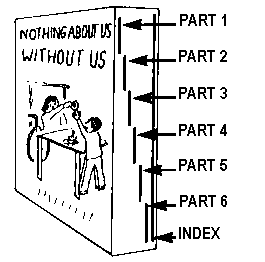
This is an "idea book" about problem solving - not a "cookbook" with precise instructions and measurements for making pre-designed aids and equipment. It is about thinking problems through rather than just following instructions. Nevertheless, you can use it as a reference book concerning different disabilities, assistive devices, and methods of problem solving.
The book is divided into an Introduction and 6 Parts. We suggest you start by reading the main Introduction. This gives an overview of the book's purpose and content. Each of the 6 Parts also has its own helpful introduction. Page-edges of these introductions are marked with short black lines. The book's index has page-edges marked with a long black line.
TO FIND WHAT YOU ARE LOOKING FOR IN THE BOOK, YOU CAN USE:
- The list of CONTENTS at the beginning of the book. This lists all the Parts and Chapters in the order that they appear in the book, and it gives page numbers.
- The INDEX at the end of the book (the pages with the whole outer edge black, starting on page 345). This lists in alphabetical order (a, b, c, d, and so on) all the topics or names that you may want to look up. The Index is coded in this way:
- Names of persons who appear in the stories are listed in the Index alphabetically by their first name, like this: CARINA; EDGAR; MARI PlCOS.
- Names of assistive devices and technologies appear like this: braces; communication boards; wheelchairs.
- Names of ditferent disabilities or problems are listed like this: blindness; speech problems; spinal-cord injury.
- All other entries are listed in ordinary letters, iike this: Child-to-Child activities; India; land mines; women's rights.
If you cannot find what you are looking for, look under a similar name. For example, if you don't find infantile paralysis, look under polio or paralysis.
KEY PLAYERS. Most of the stories in this book come from PROJIMO, a community based rehabilitation program run by disabled villagers in Mexico. After the main Introduction to the book, there is a brief description of some of the members of the PROJIMO team, including MARl, CONCHITA, and MARCELO, whom you will meet often in the stories.
For further information on innovative technologies, or on groups to contact, see the two resource lists at the end of the book (just before the Index):
- Resource List I : Organizations and Programs,page 341 ;
- Resource List 2: Reading and Teaching Materialspage 343.
Please note: The first 4 Parts of this book focus on creating aids and equipment. The last 2 Parts look at innovative approaches to the integration and participation of disabled persons in the home, community, school, and work place*.
_____________________
*Because this book is organized around individuals and their needs rather than by kinds of disability or assistive devices, to find information on a particular disability or device - such as cerebral palsy, or special seats - you may need to refer to several chapters or even Parts of the book. For this you will find the Index especially helpful.
CONTENTS
INTRODUCTION:
Disabled Persons as Leaders in the Problem-Solving Process
PART ONE:
THE PURPOSE OF SPECIAL SEATING: FREEDOM AND DEVELOPMENT, NOT CONFINEMENT
- INTRODUCTION: A Child is Not a Sack of Potatoes
- CHAPTER 1: A Seat for Carina to Dress Herself
- CHAPTER 2: Seats with Changing Positions to Meet Jazmín's Different Needs
- CHAPTER 3: Measuring and Fitting Devices for Children Who Need a Special Seat or Standing Aid
- CHAPTER 4: Positive Seating to Help Toño See, and Edgar Learn to Walk
- CHAPTER 5: A Tire Seat to Reduce Celia's Spasticity
- CHAPTER 6: A Mudguard For Dalia
- CHAPTER 7: Listening to Rufina Listen to Her Body
- CHAPTER 8: Paper-Based Aids: Seating and Standing Aids for Cruz and Kim, and a Helmet for Edgar
- CHAPTER 8b: (Page 2)
- CHAPTER 9: Mud Seats and Other Aids for Nadu, in India
- CHAPTER 10: A Wheelchair Seat Helps Dora Overcome Chronic Depression
PART TWO:
CREATIVE SOLUTIONS FOR WALKING AND FOR LEG AND FOOT PROBLEMS
- INTRODUCTION: New Approaches to Meeting Common Problems
- CHAPTER 11: Leg Braces for David: The Need to Solve Problems as Equals
- CHAPTER 12: Leg Braces for Noé: From Old Plastic Buckets to Polypropylene
- CHAPTER 13: Plastic Braces to Help Stabilize Carla's, Neto's, and Robi's Knees
- CHAPTER 14: Adjustable Plastic Braces to Correct Raúl's Club Feet
- CHAPTER 15: A Foot-Positioning Device for Taking Plaster Casts
- CHAPTER 16: Plastic Bottles to Correct Margarita's Turned-In Feet, and to Heal Jesús' Pressure Sore
- CHAPTER 17: Twist Hoses (and Foot Tubes) to Help Diego Walk
- CHAPTER 18: A Low-Cost Stump-Cast Clamp for Making Artificial Legs
- CHAPTER 19: The Mukti Limb: Fast, Cheap Legs from Plastic Pipe
- CHAPTER 20: A Wooden Skeleton for Teaching Functions of Muscles and Bones
PART THREE:
OVERCOMING DIFFICULTIES WITH BODY FUNCTION THAT RESULT FROM DAMAGE TO THE NERVOUS SYSTEM
- INTRODUCTION: Creative Solutions to Personal and Situational Needs
- CHAPTER 21: A Back-Brace Crib and Bounce-Bed for a Baby with Severe Spinal Curve
- CHAPTER 22: Non-Spill Trays: A Personal Invention Shared with Others
- CHAPTER 23: Helping José Walk and Talk after His Stroke
- CHAPTER 24: Gene Invents a Writing Brace for His Paralyzed Hand
- CHAPTER 25: Life-Saving Innovations in Bladder Management By Spinal-Cord Injured Persons
- CHAPTER 26: Leg Splints and a Standing Post to Stop Alicia's Urinary Infection
- CHAPTER 27: Cushions and Pressure Testers to Help Avoid Pressure Sores
- CHAPTER 28: Julio Uses His Spasticity to Prevent Pressure Sores
PART FOUR:
WHEELS TO FREEDOM
- INTRODUCTION: Designing Mobility Aids to Meet Individual Needs
- CHAPTER 29: Making Wheelchairs from Trash: Innovations in War-Torn Angola
- CHAPTER 30: Evolution of the Whirlwind Wheelchair
- CHAPTER 30b: (Page 2)
- CHAPTER 31: For Long Runs on Lousy Roads: A Hand-Pumped Tricycle
- CHAPTER 32: Mobility Aids, a Walking Toilet, and a Seeing-Eye Person for Carlos
- CHAPTER 32b: (Page 2)
- CHAPTER 33: Bars for Beno, and a Walker that Turns into Crutches for Lino
- CHAPTER 34: A Front-Wheel-Drive Wheelchair for Aidé: Lessons Learned from an Experiment that Failed
- CHAPTER 35: A Gravity-Powered Elevator for Wheelchair Accessibility
- CHAPTER 36: Paraplegics Who Walk Where Wheelchairs Won't Enter (India)
- CHAPTER 37: Martín Builds a Jointed Gurney to Keep His Hips from Stiffening
- CHAPTER 38: Osvaldo: A Triplegic Boy with Many Challenging Needs
- CHAPTER 39: A One-Hand-Drive Wheelchair for Che: A Challenge for Martín
PART FIVE:
INNOVATIVE METHODS AND APPROACHES
- INTRODUCTION: People Helping and Learning from Each Other as Equals
- CHAPTER 40: Ways Disabled Persons Win Community Respect
- CHAPTER 41: Karate for Fun (and Therapy) for Children with Cerebral Palsy
- CHAPTER 42: Need for Independent Living and Women's Liberation: Conchita's Story
- CHAPTER 43: Disabled Gangsters Help a Child with Muscular Dystrophy
- CHAPTER 44: Learning New Ways to Work in the Non-Formal Economy
PART SIX:
CHILD-TO-CHILD: INCLUDING DISABLED CHILDREN
- INTRODUCTION: Helping Children Respond Creatively to the Needs and Rights of the Disabled Child
- CHAPTER 45: From Beneficiaries to Facilitators: Ramona, Jesús, and Child-to-Child
- CHAPTER 46: An Unusual Friendship: Manolo and Luis
- CHAPTER 47: Vania and Jésica: A Ten-Year-Old Doctors a Younger Child
- CHAPTER 48: Four Siblings with Muscular Dystrophy Lead a Program for Disabled Children
- CHAPTER 49: Playmates as Therapists: Helping Fernando Learn New Skills
- CHAPTER 50: Mentally Handicapped Girls Assist Multiply Disabled Children: Outcome of a CBR Training Course in Brazil
AFTER-THOUGHTS: Communication as if ALL People Matter
RESOURCE LISTS
- Resource List 1: Programs and Organizations Promoting Innovative Technologies
- Resource List 2: Reading and Teaching Materials
INDEX
An Invitation to Readers
to Contribute Ideas to Another, Similar Book
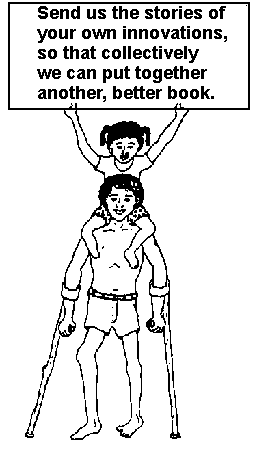
We hope that this book is only the beginning of an ongoing, still very incomplete process of sharing helpful ideas. It tells personal stories of the search for solutions by folks who mostly live in one small corner of the world (western Mexico). And it focuses mainly on physical disabilities, because that is the area in which PROJIMO (the village program that gave life to this book) happens to have the most experience.
Likewise, the stories told here and the solutions found may not be the most instructive or appropriate (even locally). We work with what we have, within our limitations. However, it is better to share blemished fruit than none at all.
We imagine that many of you - the readers of this book - are disabled, or that you relate to or work with persons with a disability. Many of you have your own great stories of how you have searched for and discovered solutions. On reading this book, perhaps some of you will get ideas for more useful innovations than the ones we describe. (We hope the book will inspire you to try out your own clever ideas - not just ours!)
Among disabled persons around the world, their families, friends, and those who work with them, there is a wealth of exciting ideas, rich experiences, and innovative solutions (or partial solutions). This book just touches the surface of what is possible.
So, here is our invitation:
We hope that you, the readers of this book, will send us your own stories and experiences. Let us hear from you about innovations, gadgets, "appropriate technologies," and "easier ways of doing things" - discoveries that you would like to share with others. If possible, include drawings, photos, or both. (See page 340, on Suggestions for Effective Information-Sharing in Print.)
There are 3 ways in which we may be able to share your contributions:
- We can share them with the PROJIMO team of disabled village rehabilitation workers. Your findings may trigger their imaginations to experiment with new ideas, designs and possibilities, adapting them to their own local resources and reality.
- We hope to include some stories in our Newsletter from the Sierra Madre, which reaches health and disability workers in 130 countries. (Write to us at HealthWrights if you might like to subscribe.)
- If we get enough good ideas, we may put together another book similar to this one, but hopefully even more useful because it will be more of a world-wide, cooperative venture.
In describing your innovations, please tell enough about the local situation and the people involved to make the stories personal and heart-warming. Try to show that technology should serve people, rather than people serving technology.
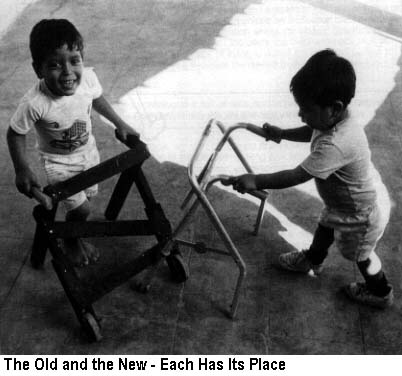 The wooden walker, with its bigger wheels, rolls better on rough ground than the "modern" aluminum walker. The wooden front wheels act as brakes when the child puts his weight on them to step forward - a feature the aluminum walker lacks (see page 53). Also, because the wooden walker is heavier it gives more stability to the child with unsure balance. |
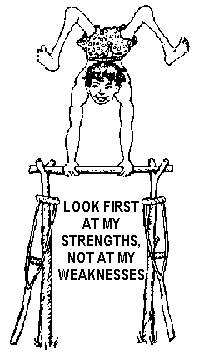
|
Nothing About Us Without Us
Developing Innovative Technologies
For, By and With Disabled Persons
by David Werner
Library of Congress Cataloging in Publication Data
Includes Index
- Medicine, Popular - Handbooks, manuals, etc.
- Rehabilitation - Handbooks, manuals, etc.
- Community Health Aids - Handbooks, manuals, etc.
- Appropriate Technology - Handbooks, manuals, etc.
Library of Congress Catalog Card No:97-073594
Werner, David, 1934-
- Nothing About Us Without Us: Developing Innovative Technologies
- For, By and With Disabled Persons / David Werner
- 360 pages
- ISBN 0-9655585-3-3
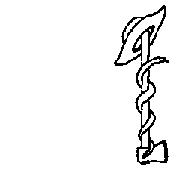
|
Published by Copyright 1998 by David Werner |
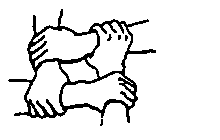
|
Any parts of this book, including the illustrations, may be copied, reproduced, or adapted to meet local needs, without permission from the author or publisher, provided the parts reproduced are distributed free or at cost, not for profit. For any reproduction with commercial ends, permission must first be obtained from the author or HealthWrights. The author would appreciate being sent a copy of any materials in which text or pictures have been used.
Note to those considering translation: To avoid duplication of efforts, and for suggestions about adapting the ideas and information in this book, before beginning any translation please contact the author or HealthWrights.
Printed in the United States of America on recycled paper
